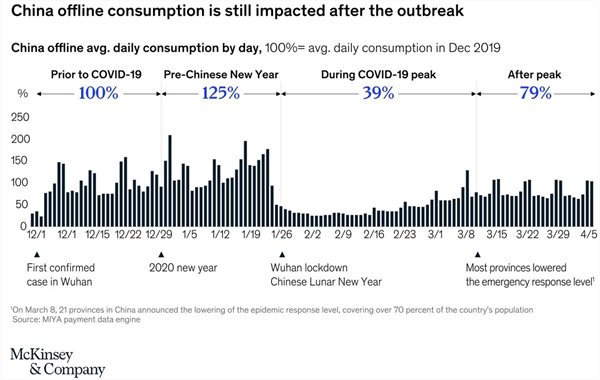While Covid-19 has turned our personal lives upside down, it's also changed the way we shop and consume goods.

Getty
The global pandemic has touched every part of our lives, from endless Zoom calls, Houseparty social gatherings, virtual quiz nights and after work drinks – all conducted online. We have even found a way to exercise at home with YouTube, apps and PT sessions on video calls.
So, while we have all been busy finding new ways to live, connect and work – what does this mean for retailers? How have our shopping behaviours evolved? And what role has digital played in helping retailers get back into business?
The reality is that lockdown and social distancing has given retailers a lot to contend with as their doors open again, and they haven’t had very long to figure out a game plan. There has been limited time to strategise and instead they have had to embrace the “adapt or die” attitude.
As well as our daily habits changing, consumers have had time to reflect and reassess on where they shop and what they buy. Lockdown has welcomed in a new desire to support local business and thus the communities we live in where people try and reduce the risk of infection by staying closer to home.
Marketing industry stalwart and CEO of LoveHoney, Sarah Warby, isn’t a stranger to the pressures of the retail environment having held senior posts at British supermarket chain, Sainsbury’s as well as Heineken in the past. Warby believes that the pandemic has shaken up the way we shop, and its effect will continue for years to come. “The challenges of physical retail are acute at the moment, and it will continue to be difficult for a few years," she says.
Robin Philipps, CEO of e-commerce watch supplier, the Watch Shop, encourages businesses to “look to China for clues on how tech and virtual adoption might be adopted.” This advice is particularly apt considering that offline consumption in China is still suffering, even after the peak of the outbreak, according to a recent McKinsey & Company study.
If we take China as a useful example, it’s clear that online retail has opened up a whole new customer base of opportunities which we can learn from. These opportunities are:
Create personal experiences
In the same way salespeople in a traditional retail environment connect with shoppers on a human level, brands need to do the same in an online environment. It’s important to go beyond providing a transactional experience and to really engage the audience online.
Live chat is a good way to do this. This could be through answering queries about a product or service, or taking care of a customer’s data and nurturing them with communications, content and information which matters to them.
Think global, act local
The pandemic has made consumers think more about supporting their local brands, producers and retailers. Does your product or service provide a local impact, story or standpoint and what is the societal role it offers? Showcasing your offering’s ‘localness’ can set you in good stead for long-term gains.
Convenience
Make the buying experience easy. We know that consumers have high expectations so think about how you deliver on that, be it through a clear user experience when navigating through products and solutions online or same day (and free) delivery. Be open to it.
Omnichannel presence
Multiple touchpoints and channels to explore brands are more relevant than ever. In addition to the brand-owned website and traditional online retail platforms, consider extending your offering and the ability to purchase via your social media platforms.
There is currently significant interest in purchasing goods through shoppable tags, making exploration of a product simple but also gives access to an easier “checkout”. The big social media companies are investing significantly in helping brands showcase their products and services at a minimal cost, so capitalise on this opportunity.
Understand the customer journey and experience
The consumer buying journey does not just stop with digital communications. Digital experiences – especially when it comes to mitigating risks and ensuring customer safety – are just as important. Now is a good time to ensure you have good contactless payment services with minimal touch exchange. The travel industry, for example, needs to reduce contact due to noticeable sanitary measures – possibly with robotic devices.
Covid-19 has brought about a lot of change, but consumers and businesses need to continue to adapt and embrace the post-pandemic revolution. It’s fair to say that the traditional retail environment won’t die but it has to adapt and continue to evolve, those who do so will thrive and undoubtedly those that don’t, will fail.
As Sarah Warby states, “In many sectors, there will be a place for retailers in customers' lives but the windows where you are relevant are getting smaller – and it is harder. The winners will win bigger.”








































